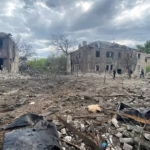Introduction
Natural disasters such as hurricanes, tornadoes, floods, and wildfires can transform thriving neighborhoods into scenes of widespread devastation within minutes. Entire electrical networks—comprising substations, power lines, transformers, and control systems—can sustain heavy damage, leaving communities without power, refrigeration, climate control, and the technology on which much of modern life depends. In these moments of crisis, utility companies play a critical role, not only as technical experts but also as emergency responders and pillars of local resilience. Their prompt actions influence how families, businesses, hospitals, and first responders regain safety and normalcy.
The challenge of restoring electricity is as much about strategic coordination as it is about technical capability. Utility companies often form partnerships with advanced equipment suppliers, such as DivergentAlliance.com, which enables them to access specialized tools, expand their workforce capacity, and deploy innovative restoration solutions. The journey from disaster to full recovery involves meticulously assessing damage, repairing equipment under harsh conditions, communicating with customers, and planning for a more resilient energy future. By understanding the process step-by-step, from the initial response to long-term modernization, we see that utilities not only restore power, but also help restore hope and stability.
Immediate Response and Damage Assessment
The hours immediately following a disaster are among the most critical for utility companies. Teams are dispatched promptly, with a dual focus on assessing risks and initiating the groundwork for large-scale repairs. Their priority is to safeguard people—both members of the public and their workforce—from the heightened dangers posed by live wires, unstable equipment, and hazardous debris. Neighborhoods may be isolated due to blocked roads or flooding, adding another layer of complexity to the challenge.
Specialized assessment teams, wearing insulated gear and equipped with advanced diagnostic devices, are dispatched to determine the extent of the damage. They systematically check substations for flooding or fire damage, inspect transformers, and trace power lines that are toppled or tangled in downed trees. These assessments form the blueprint for the restoration plan, identifying what must be repaired, what can be temporarily bypassed, and where to send crews first to restore critical services, such as hospitals and emergency shelters. Rapid, factual situational awareness is the bedrock of any effective restoration effort.
Mobilizing Mutual Assistance Programs
Given the overwhelming scale of some disasters, no single utility can be expected to manage every aspect of power restoration independently. The utility industry has therefore developed robust mutual assistance programs, which are collaborative agreements between companies that lend resources, equipment, and skilled teams to one another in times of crisis. When disaster strikes, these networks are activated almost instantaneously, reinforcing the hardest-hit areas with the support of additional crews, vehicles, and equipment from hundreds or even thousands of miles away.
This mutual aid approach exemplifies the sector’s culture of cooperation and shared responsibility. Not only do these programs enable a more rapid and efficient restoration, but they also foster industry-wide learning and camaraderie, which is helpful for improving best practices across regional and national boundaries.
Case Study: Hurricane Helene
A compelling example of mutual assistance in action is seen in the response to Hurricane Helene. Faced with millions of customers in the dark across several states, utilities quickly mobilized mutual assistance programs, welcoming thousands of workers from neighboring states. These reinforcements brought bucket trucks, spare transformers, fuel, food, and other supplies, dramatically accelerating the timeline for repairs. Such an orchestrated effort, as reported by Utility Dive, is essential in ensuring that even in the most significant disasters, restoration progresses at a pace that individual companies could not achieve on their own. These initiatives are not just about manpower—they are about solidarity, reliability, and a commitment to serving communities in their hour of need.
Infrastructure Repair and Modernization
Once the scope of the devastation is mapped and mutual aid teams are in place, utilities begin the intensive process of physically restoring the grid. This includes the removal of tree limbs and debris from lines, replacement of snapped poles, repair of transformers, and reconnection of severed high-voltage circuits. All of this must occur regardless of weather conditions, often with crews facing not only challenging physical terrain but also mental and emotional strain from working long shifts in the aftermath of a catastrophe.
Yet, each disaster presents an opportunity. Rather than simply replacing what once stood, utilities have shifted toward rebuilding with resilience in mind, upgrading infrastructure to withstand future storms and other hazards more effectively. This might involve installing stronger composite poles, deploying smart sensors and automated switches, or relocating more lines underground to protect them against wind and flooding. Modernization thus becomes a core element of every major restoration, driving the sector forward technologically while reducing the risk of prolonged outages in future crises.
Building a More Resilient Grid
A notable example of resilient rebuilding is seen in Puerto Rico following Hurricane Maria. The devastation of the island’s electricity grid was so severe that it prompted not just repairs, but a comprehensive redesign of the system. The new grid incorporates hardened transmission lines, advanced metering, and significant undergrounding in vulnerable areas—all aimed at making power restoration faster and more robust after future events. According to the Center for American Progress, efforts like these underscore the importance of renewable energy and modern grid technologies in building a more resilient and reliable electricity infrastructure, particularly in the face of intensifying climate threats.
Communication and Customer Support
Throughout the entire restoration process, clear, timely, and transparent communication remains paramount. Utility companies utilize every available channel—including websites, social media, email alerts, SMS updates, and call centers—to keep the public informed. Customers need accurate, frequent updates not only about when their power will return but also about how to stay safe in the interim. This communication helps reduce anxiety, discourages misinformation, and builds trust between utilities and the communities they serve.
Utilities also face the challenge of supporting customers who may have medical needs, limited mobility, or language barriers. Many organizations provide special hotlines, daily update bulletins in multiple languages, or deploy mobile support teams directly into neighborhoods to ensure that vulnerable populations are not left behind during the recovery process.
Conclusion
Utility companies are indispensable to community recovery in the wake of natural disasters, providing not only technical expertise but also stability, security, and a path toward renewal. Their role encompasses the rapid deployment of assessment teams, the mobilization of vast support networks, the physical and technological modernization of energy infrastructure, and the ongoing communication and support that people so desperately need during times of uncertainty.
Jane Lee is a versatile writer and storyteller with a passion for exploring diverse themes through her work. With a background in literature and creative writing, Jane has authored numerous articles and stories that captivate and inspire readers.


